


The Atkinsons add elements from their travels to their award-winning bedand-breakfast Page 20













The Atkinsons add elements from their travels to their award-winning bedand-breakfast Page 20









From the rich maritime heritage of whaling towns to quaint island villages and grand seaside mansions of the Gilded Age, our small, comfortable ships can take you to the heart of New England’s most treasured destinations. Be welcomed back to your home away from home, where you can delight in the warm camaraderie of fellow guests and crew.









































Before writing this column, I took some time to reflect on what I said in my column this time last year. One thing is for sure: Our industry is constantly changing.
Last year, I talked about how far we have come and the changes we have seen in our 87-year history. We certainly don’t provide power the same way we did all those years ago. However, one thing has not changed: We have always been committed to and will continue to be committed to providing safe, reliable, affordable electricity.
Your Louisiana electric cooperatives continue to adopt new and improved methods to obtain power supply, including renewable energy. Systems have become more automated. Mother Nature has taught us we must build back stronger and more resilient. Technology plays a more significant role in delivering electricity to you, the consumer-member, and how our employees manage their daily tasks.
Last year, our Youth Leadership Council Representative Jacob Mullican was asked, “What do you think about when you flick on the power switch?” His response was probably the same as you would give if asked the same question, “I don’t think; I just expect.” He was right. You expect the lights to come on when you flick the switch. You set high expectations for your
electric cooperative’s directors, management and employees every minute of every day, and with exceptions to bad weather or mechanical failures, we deliver on those expectations.

But your electric cooperative delivers so much more than just reliable power. We constantly work to keep electricity affordable and safe. We focus on creative solutions to ensure reliability and resiliency. In addition, your electric cooperatives give back by supporting educational opportunities for our youth through Youth Tour, mini-grants and 4-H, to name a few. They support and volunteer at charitable and community events. Your electric cooperative hires local men and women from your communities. They provide employees with educational opportunities. We live and work in your communities. We know what it means to power lives.
We know you have high expectations for us, and you should. But we also want you to know that safety for our employees and community is always our priority. We have a genuine concern for our community. It’s
CEO Addie Armato
DIRECTOR OF LOSS CONTROL Aarron Graham
SAFETY COORDINATOR Ricky Melancon
COMMUNICATIONS AND DIGITAL MARKETING
SPECIALIST Conley Bourgeois
ADMINISTRATIVE ASSISTANT Rhianna Garon
CREDIT UNION
Robin Plunket, manager
Jody Overhultz, representative
Board of Directors
President Dennis Glass
Vice President Michael Heinen
Secretary/Treasurer Roger Dale DeHart


BEAUREGARD ELECTRIC COOPERATIVE INC.
J.R. Hickman Trent Buxton
CLAIBORNE ELECTRIC COOPERATIVE INC.
Mark Brown Lane Davidson
DEMCO
Daniel Berthelot Richard “Dickie” Sitman
JEFF DAVIS ELECTRIC COOPERATIVE INC.
Michael Heinen Byron Hardee
SOUTH LOUISIANA ELECTRIC COOP ASSOCIATION
Trevor Benoit Roger Dale DeHart
WASHINGTONST. TAMMANY ELECTRIC COOP INC.
Joe Jarrell Dennis Glass
Associate Member
PANOLAHARRISON ELECTRIC COOPERATIVE INC.

one of our operating principles.
Although I am not a futurist, I can confidently say this new year will bring numerous opportunities and challenges for our electric cooperatives. Whatever 2024 brings, our electric cooperatives will always put you, the member-consumer, first as they work daily to meet and, I hope, exceed your expectations.
From all of us at your Louisiana electric cooperatives, we wish you a happy, healthy and prosperous new year.



WASHINGTONST. TAMMANY ELECTRIC OFFICES
Main office
950 Pearl St. (P.O. Box 697)
Franklinton, LA 70438
Phone: 985-839-3562
www.wste.coop
Additional offices
21504 Mire Drive
Abita Springs, LA 70420
13526 Hwy. 40 Folsom, LA 70437
2081 E. Gause Blvd.
Slidell, LA 70459
GENERAL MANAGER
DANE HOCOTT
BOARD OF DIRECTORS
Dr. Francis Cefalu | President
Dennis Glass | Vice President
Olander Smith | Secretary
Glenn Magee | Treasurer
Joe Jarrell Jr.
Chris Graves
Billy Wayne Rester
Charles Singletary
Nickey Smith
Life can be hectic.
Be on the go and in control with managing your account like never before. The true power of SmartHub goes far beyond the bill.
Did you know it can help you manage your account with easy features? Whether through a PC, your smartphone or tablet (Android or iOS), you’ll be able to pay your bill, view your usage, report an outage and more. This free app can make your life easier.
As soon as you log in, you’ll be able to view your billing history and make a payment with just a couple of clicks.

You’re able to see your current bill or previous bills if you want to compare costs. Not only will you see your billing history, but you’ll be able to view your actual use. See how your use is trending over time, which will allow you to take steps to lower your bill. (Account No. 341786101)
You are just a click away from reporting an outage, since reporting a service issue is a snap with the SmartHub mobile app. There’s no need to call the office, just let us know about the issue with a few clicks.






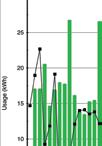





























































Washington-St Tammany Electric Cooperative Inc.
The Annual Membership Meeting of Washington-St Tammany Electric Cooperative, Inc. will be at 10 a.m. Saturday, May 4, 2024, at the Franklinton High School in Franklinton, Louisiana.
The purpose of the meeting is to conduct the business of the membership and elect three (3) members to the Board of Directors. Election of members to the Board of Directors will be held by mail ballot.
One-third (1/3) of the Washington-St. Tammany Cooperative, Inc. Board of Directors (3 Directors) shall be elected to a three (3)-year term on Saturday, May 4, 2024. Two (2) of the directors to be elected shall be residents of Washington Parish and one (1) of the directors to be elected shall be a resident of Tangipahoa Parish.
Any incumbent director may be a nominee by filing a letter of intent with the Cooperative by 4 p.m. Thursday, March 14, 2024, at which time nomination of such directorship is to be closed. Any other member of the Cooperative may be nominated by filing a petition, which can be picked up from the Administrative Assistant in Franklinton, at 950 Pearl St. between the hours of 7:30 a.m. and 4 p.m. Petitions must be returned to the Cooperative office by 4 p.m. Thursday, March 14, 2024, containing the signatures of 15 or more members in good standing of the Cooperative as of that date.
ALL NOMINATIONS FOR DIRECTORSHIP SHALL BE CLOSED AT 4 P.M. THURSDAY, MARCH 14, 2024

Louisiana Electric Cooperative general managers and board members attended the National Rural Electric Cooperative Association’s Regional Meetings 8 and 10 in New Orleans October 18-20. From left are Danny Berthelot, DEMCO; Addie Armato, Association of Louisiana Electric Cooperatives; Roger Dale DeHart, South Louisiana Electric Cooperative Association; Austin Haynes, Panola-Harrison Electric Cooperative; Anya Killmer, Jeff Davis Electric Cooperative; Trevor Benoit, SLECA; Jill McGraw, Kevin Beauchamp and Leslie Falks, DEMCO; Matt Peters, SLECA; Dane Hocott, Washington-St. Tammany Electric Cooperative; Mike Heinen, JDEC; and Eric Gautreaux, JDEC.



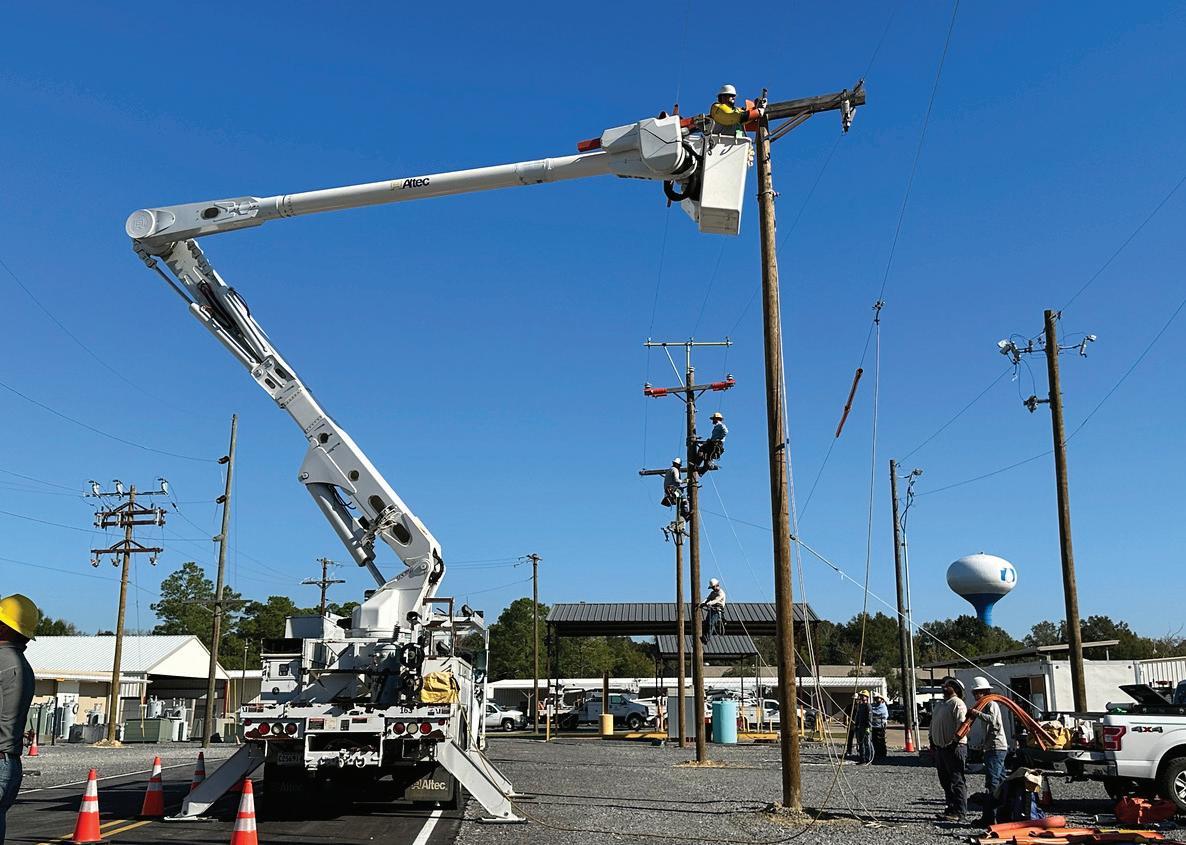
Practicing Techniques Used in the Field
Training to improve skills and stress the importance of working safely is an ongoing task for the line crews at all electric cooperatives. Live line and bucket truck training sessions, hosted by the Association of Louisiana Electric Cooperatives, were recently held at DEMCO headquarters in Greenwell Springs.
BY RICKY MELANCON

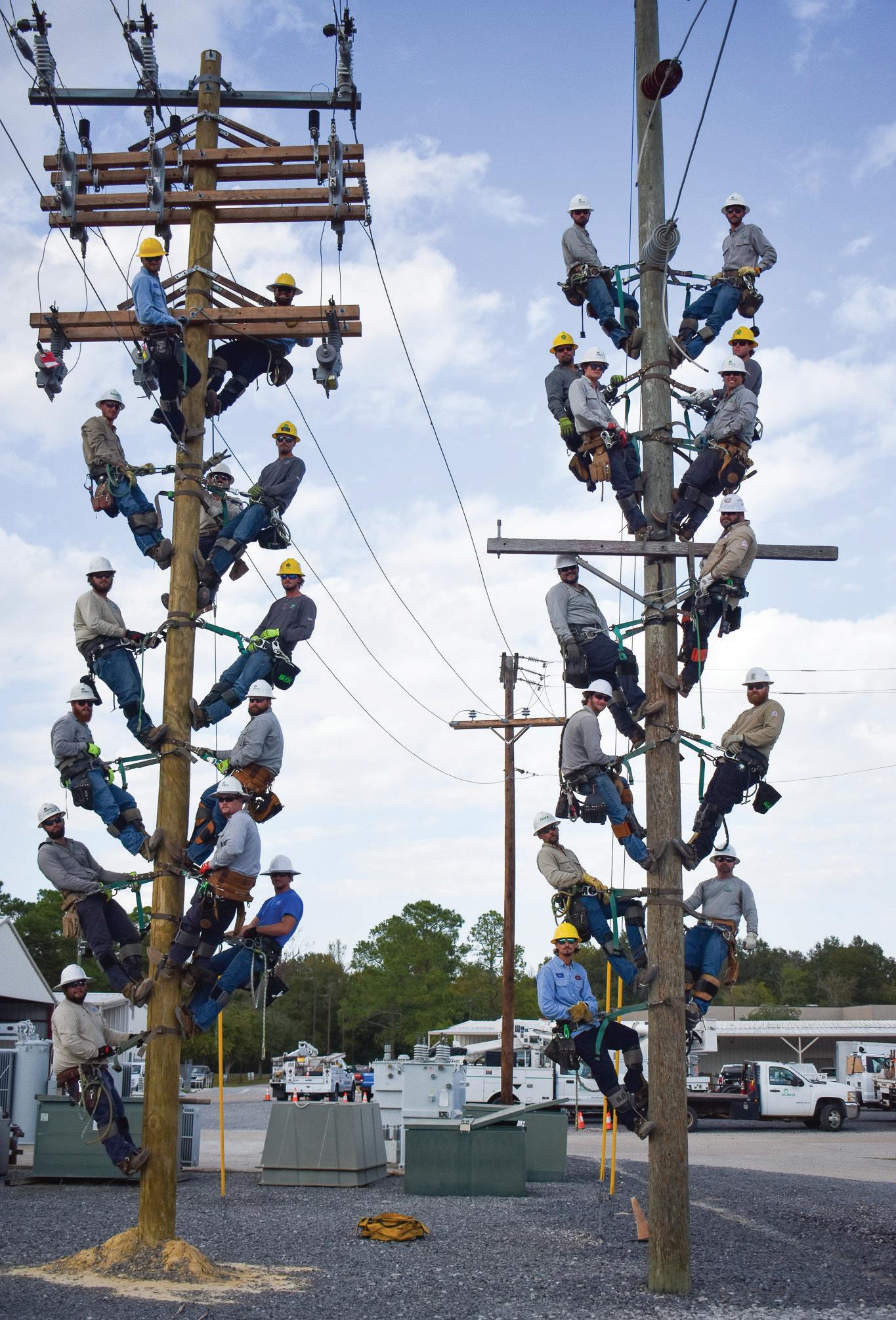

FAR LEFT: Mike Heinen, Jeff Davis Electric Cooperative general manager and National Rural UtilitiesCooperative Finance Corporation board member, speaks at the recent CFC Independent Borrowers Executive Summit in Savannah, Georgia. LEFT: Pictured at the event are, from left, Trevor Barnett, CFC; Kathy Tanner, Claiborne Electric; Addie Armato, Association of Louisiana Electric Cooperatives CEO; Mike
assistant and Eric Gautreaux,
chief operating officer.





Ten mini grant recipients receive $500 to be used for classroom-based projects


Amy Spikes—Franklinton Primary School
Ashley Carrier—Wesley Ray Elementary School
Breanna Russell—Thomas Elementary School
Bridget Etheridge—Franklinton Elementary School
Brooke Crain—Franklinton Primary School
Dixie Steadham—Marigny Elementary School
Grayson Ball—Bowling Green School
Jenny Ronquillo—Lakeshore High School
Priscilla Garcia—Franklinton Primary School
Tamica Estave—Bowling Green School








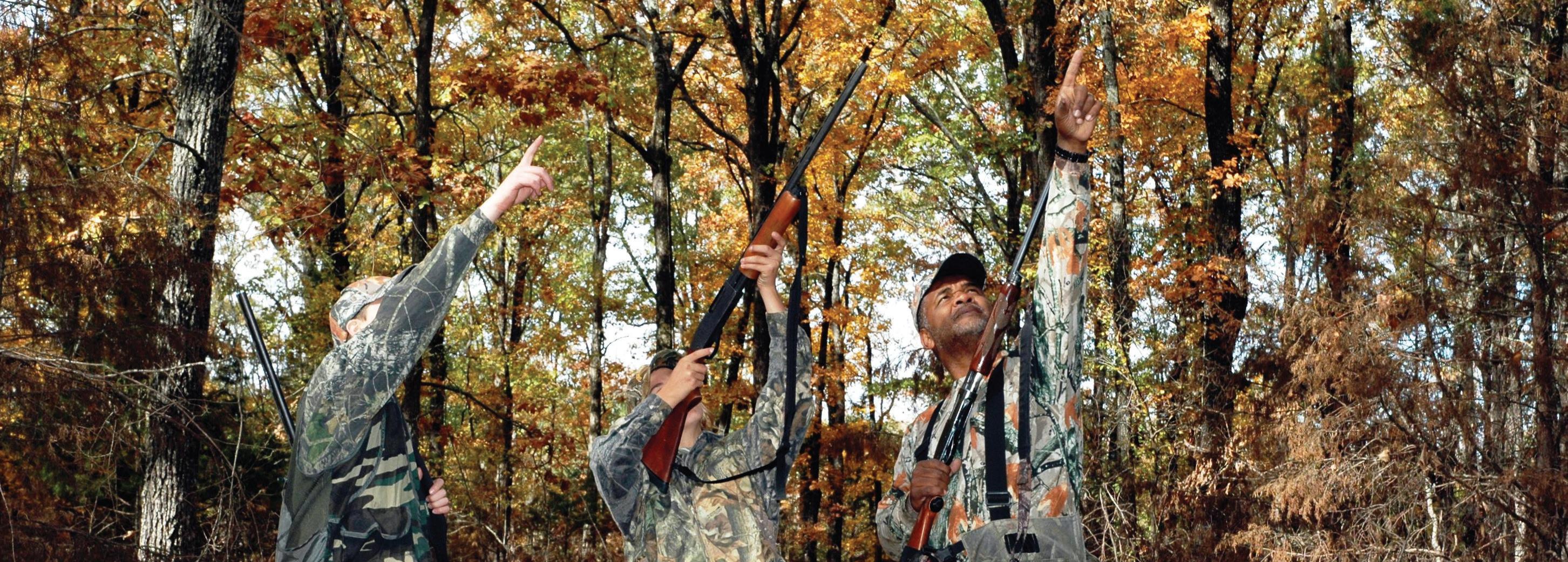



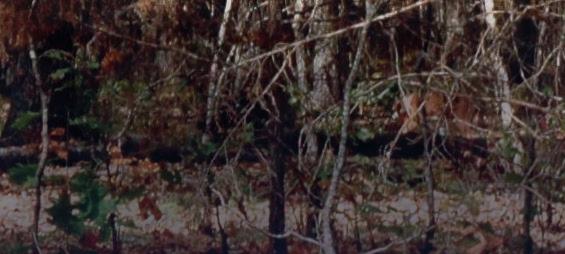
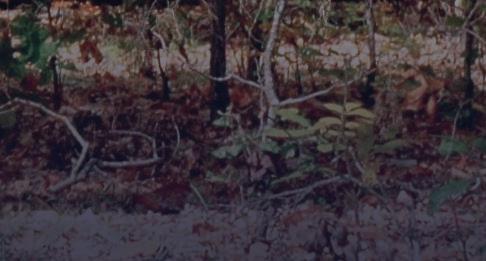
Many Louisiana sportsmen start hunting by pursuing squirrels at the side of their father, other relative or a family friend, but the tree-climbers can provide exciting sport for hunters of all ages.
To bag squirrels, hunters must spot them. The ghosts of the forest can instantly vanish when danger approaches. Masters of concealment, squirrels find countless places to disappear among the branches and foliage of big trees. Fox squirrels prefer to hide, but gray squirrels typically run as danger approaches.
In good squirrel habitat, walk through the forest slowly. Cover ground more thoroughly rather than cover more ground. Without making quick movements, advance a few steps. Then, stop to look and listen. Scan the trees for shaking branches, odd movements or anything that seems out of place, such as an oddly
shaped “knot” on a tree trunk or lumps on branches.
Smart hunters use their ears as much or more than their eyes to locate bushytails. Squirrels can be heard long before they can be seen. Listen for the distinctive sound of claws scratching on rough bark, shaking branches or objects dropping to the ground. Listen for barking squirrels proclaiming their territory, which usually happens a little later in the morning or late afternoon.
Periodically, find a stump, fallen log or a comfortable tree trunk and sit down for a while. Some people carry light, camouflaged folding chairs so they can sit anywhere. Remain as still and quiet as possible while scanning the trees. A good pair of binoculars helps detect wellconcealed bushytails.
If you spot a squirrel just out of range,
watch it. Determine where it might want to go. Sometimes, a squirrel foraging for food might wander into the gun range of an undetected hunter. If the squirrel doesn’t get closer, plan a good stalking route that takes advantage of any available concealment.
Hunting squirrels in pairs or teams can put more weight in a gamebag. Alerted bushytails habitually put tree trunks, large branches or other cover between themselves and hunters. Take advantage of a squirrel’s innate curiosity. One person can walk around the tree, making noise to grab the squirrel’s attention, while another remains still and silent.
Keying on that moving person, the squirrel might shift its position. That could give someone else a shot at it. When hunting alone, toss a limb, pinecone or another object to the other side of the tree. That might make a squirrel jump and reveal its position.
Bushytails love to gnaw on green pinecones. They tear apart the cone chips


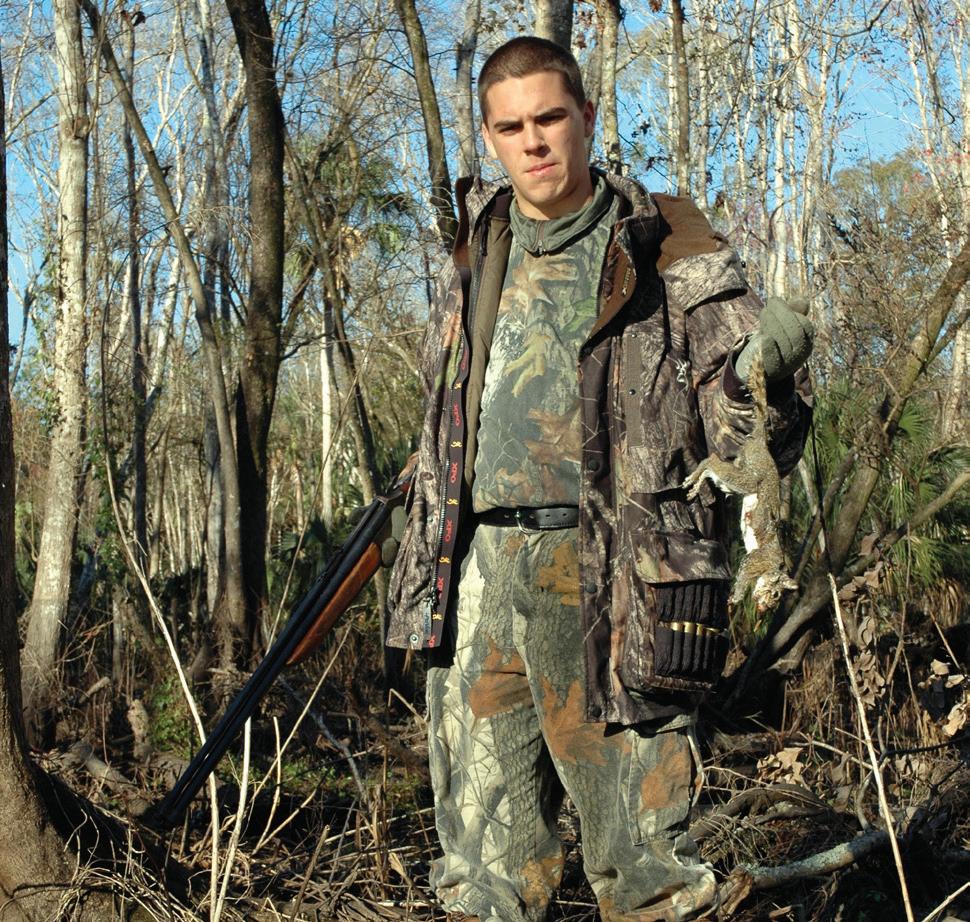

to reach succulent seeds. Cones from various pine species ripen at different times. In addition, cones can stay edible much longer than acorns or other mast and can provide squirrels food for weeks.
“Squirrels seldom go into longleaf pines, but they frequently go into loblolly pines because they have more limbs all the way up the tree,” says Chester Thompson, a champion squirrel dog breeder and hunter from DeRidder. “In late season, many trees will still have cones. As the season goes on, squirrels move to different types of trees to feed upon whatever ripens at that time.”
A monoculture pine forest normally doesn’t offer enough nutrition throughout the year to hold many squirrels, but a mixed pine and hardwood forest provides abundant and varied food sources. At times, a single pine tree growing in an oak grove could attract squirrels like children to a candy store.
“Squirrels are usually in forests with mixed pines and hardwoods,” Chester says. “I like to hunt the edges where a pine forest transitions to a hardwood bottom. Squirrels go back and forth from the pines to the hardwoods.”
When feeding on cones, squirrels leave mounds of discarded husks, chips and other debris piled up around tree trunks. Look for green or freshly gnawed cone husks still sticky with sap to confirm recent
squirrel activity. After locating a good tree, find a comfortable spot to sit and wait. Listen for falling chips that sound like light rain hitting the forest floor
Sneaking up on squirrels in thick underbrush, palmettos and sucking mud seems almost impossible. However, in a place with an abundance of water like Louisiana, a small human-powered craft like a pirogue, canoe or kayak glides along silently. Along a promising shoreline, ease the paddle into the water and move forward slowly. Watch for movement. Periodically, stop to listen for activity. Use any available cover, and hug the inside shorelines on curves to keep the boat as hidden as possible.
Sportsmen can hunt solo by positioning a gun in a convenient, safe place when paddling, but many boaters prefer to work in teams. Designate one shooter who sits in the bow, ready for action, with the gun pointing in a safe direction. The other person controls the boat and helps spot game. After locating a squirrel, the paddler positions the craft so the shooter can make a safe shot.
Hunting from a boat is a good way for children to participate without slogging through soft mud or impenetrable thickets where walking isn’t easy. Children quickly grow bored sitting on cold ground and rarely remain still or quiet. In a boat,
at least the scenery constantly changes. Boaters can carry additional supplies, snacks and refreshments to take occasional breaks.
When hunting squirrels from boats, sportsmen might see other game, such as feral hogs. Hunters may spot an occasional rabbit on patches of slightly higher ground. During waterfowl season, hunters with the proper licenses, weapons and ammunition could jump wood ducks or other legal birds while quietly paddling along any Louisiana bayou.
It’s also possible to fish while looking for squirrels. Bushytails routinely see anglers in boats and largely ignore them
The Louisiana squirrel season runs through February 29, 2024, with a limit of eight per day. Season dates and regulations on some public lands might differ from the statewide dates and laws, so always check the regulations before hunting.
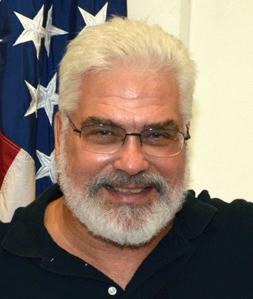
Born in New Orleans, John N. Felsher grew up in Slidell and attended the University of Southwestern Louisiana, now the University of LouisianaLafayette. He worked as the outdoors editor for four Louisiana newspapers and served in the Air Force. An avid sportsman, Felsher now works as a full-time professional freelance writer, broadcaster and photographer. Contact him at j.felsher@hotmail.com or through Facebook.



By Drew Woolley
Marc Broussard was 5 years old when his father first realized the boy could sing. By that time, Ted Broussard, famed Boogie Kings guitarist, had given up on fostering a love for music in Marc’s two older brothers, and he eagerly set out to teach his youngest son to play.
Marc remembers the first four songs his father taught him were an eclectic mix: “The Greatest Love of All,” originally recorded by George Benson but popularized by Whitney Houston, Chuck Berry’s “Johnny B. Goode,” The Beatles’ “Maxwell’s Silver Hammer” and Sammy Davis Jr.’s “The Candy Man.”
Armed with those standards, Marc ventured into the bustling Lafayette music scene where vocalists like G.G. Shine, Jerry LaCroix, Tommy McLain and Duane Yates captured his imagination. Marc was more than happy to tag along or haul equipment as long as he could be around the music.


“Any time it was an all-ages show, or my dad might be playing a high school reunion or something, I’d go help carry amps and guitars,” Marc says. “I’d get up and sing one or two songs at the most. That was a real treat for me. But it also gave me a little inside baseball as to what that life looked like. And frankly, I was enamored. I wanted everything to do with it. It seemed like the best gig in the world.”
That diverse musical background was a fitting entry point to Louisiana
music, which has always drawn on a vibrant mix of cultural traditions. Mike Shepherd, founder and chief executive of the Louisiana Music Hall of Fame, traces those origins back to the 1600s and one spot where everyone gathered.



“A place called Congo Square in New Orleans was really where the melting pot came together,” he says. “There were slaves from Africa, the Caribbean and the Canary Islands, but we also had French and Spanish influences. Europeans brought violins, accordions and horns. The African people tended to bring more percussion instruments. To say it simply, music is who we are. Always has been.”


While New Orleans jazz and blues have defined Louisiana music and influenced artists all over the world, it’s only one part of the rich musical history of the Bayou State. Marc himself identifies more with the blue-eyed soul movement of the ’60s and ’70s, with influences from the swamp pop that grew out of Southern Louisiana.
“For someone like me who, as a young man, was really into guys like Brian McKnight, Boyz II Men and Michael Bolton, these really freak singers, to all of a sudden hear a Lil’ Band of Gold record













































































































Meeting Louisiana legends like Wayne Toups gave Marc a deeper appreciation for local sounds. Wayne has played the accordion since he was 13, mixing Cajun and zydeco styles into what he calls “ZyDecajun.” Dubbed “Le Boss” and “The Cajun Springsteen,” Wayne is a Grammy winner and a member of the Louisiana Music Hall of Fame. PHOTOS COURTESY OF WAYNE TOUPS
blues cover record, “S.O.S. 4: Blues for Your Soul,” with a portion of the proceeds benefiting the Guitars Over Guns youth rehabilitation program.
No matter where his career has taken him, he has never lost the connection to his hometown, where he still lives with his wife and children.
“This need to be who I am has always been intrinsically tied to this place,” Marc says. “It was never a thought that I had to move away from that. I was inextricably tied to the bayou.”
He’s far from the only musician who felt the pull of Louisiana’s rich musical history. Mike has inducted several artists into the Louisiana Music Hall of Fame who may not have been from the state but felt that same tug at formative moments in their careers.
No music is more synonymous with Louisiana than New Orleans jazz. Born in the early 1910s from a combination of Baton Rouge blues, brass band marches and a spirit of improvisation, jazz draws on influences from all over the state’s cultural melting pot. While the genre isn’t unique to Louisiana, the New Orleans variety will always be the real thing for Mike Shepherd, founder of the Louisiana Music Hall of Fame. “It can tend to be more raw and not fall within the lines necessarily,” he says. “Jazz players have a lot of lines they hold to. But in New Orleans jazz not so much.”
Driven by lively rhythms, accordion melodies and a mix of English and Creole-French lyrics, zydeco has its roots in the state’s rural communities. While it originated in the house parties and small social gatherings of Louisiana’s African American communities, zydeco was popularized by Clifton Chenier. He mixed it with elements of blues and R&B, earning him the title King of Zydeco.

Many found their way to Shreveport for the famous “Louisiana Hayride,” a music radio show from KWKH that was broadcast nationwide and was second only to the “Grand Ole Opry” broadcast for much of its run in the ’40s and ’50s. The show helped launch the career of a young Elvis Presley and offered a home to Hank Williams after his rejection from the Opry, giving Mike plenty of reason to enshrine them in the Hall of Fame. In 2024, he hopes to add Ray Charles and Dolly Parton, who also started their careers at “Hayride.”
“It’s just amazing the people who come to Louisiana and seek it out because it’s got the music,” Mike says. “It’s got all the music in the world.”
























Popular in South Louisiana and Southeast Texas, swamp pop saw Cajun and Creole musicians shift away from French traditions toward the rock ’n’ roll sounds that were becoming popular in the 1950s. Typified by slow ballads with emotional lyrics over honky-tonk piano and a rhythm and blues backbeat, several swamp pop hits made the national charts throughout the decade. But many more are regarded as classics in the region they call home.




























If swamp pop was a rebellion, Cajun music is what it was rebelling against. Like zydeco, Cajun music is upbeat and relies primarily on accordion, fiddle and vocals featuring “Cajun talk,” as Mike refers to the lyrics. “They weave it into the songs, and they weave in cinstruments,” he says. “It was the stuff French people in south Louisiana played with. They couldn’t go out and buy expensive instruments. Most Cajun musicians have their stuff made by another Cajun because you have to know the music to know the instruments.”








































































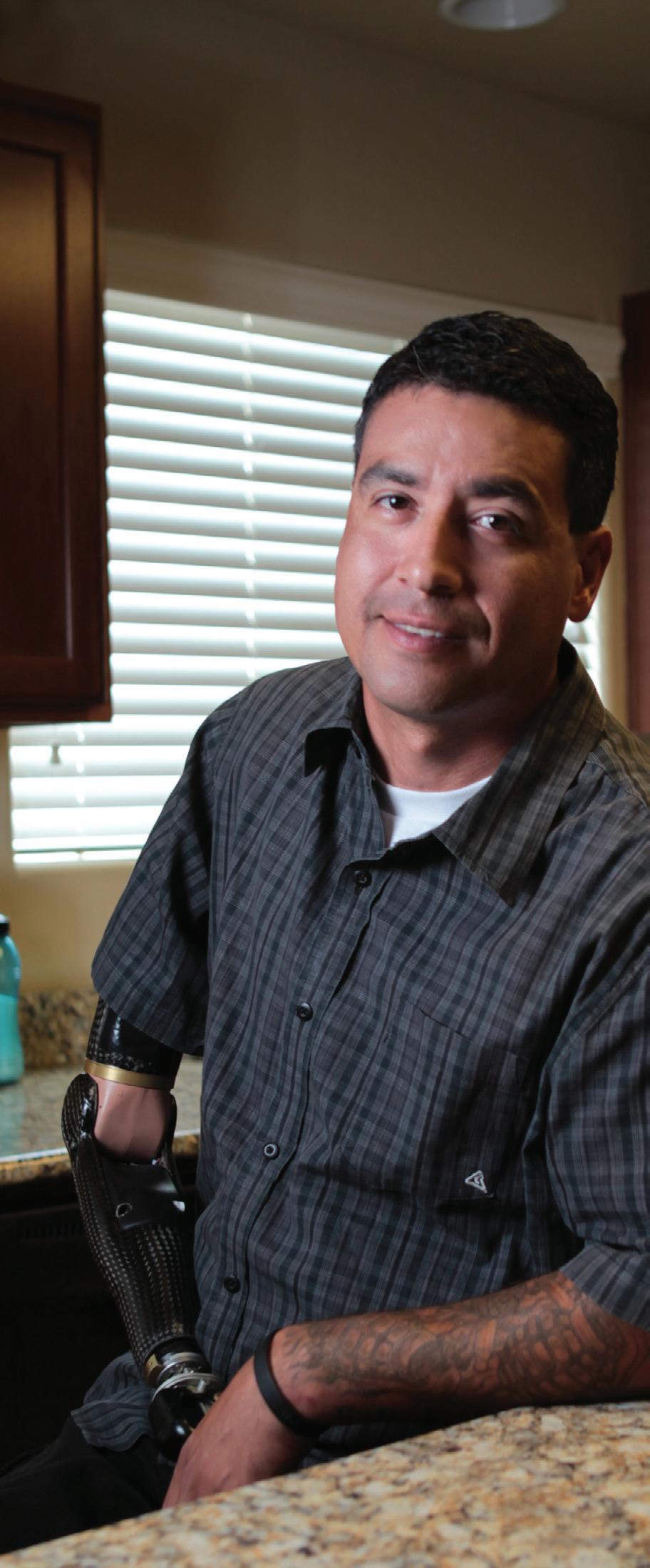



Two local juniors have the opportunity to take a weeklong, all-expenses-paid trip to Washington, D.C., sponsored by Washington-St. Tammany Electric Cooperative.
Parents or guardians of the students must be WSTE members. Students who want to have fun, meet students from across the country, speak to legislators, tour Washington, D.C., and become a part of a national fellowship can apply now. This trip is valued at more than $2,000.
About 25 young people throughout Louisiana join more than 1,800 students from 40 states June 15-22 for sightseeing and a chance to see how the government functions.
Before reaching Washington, D.C., students tour one of the Seven Wonders of the Modern World: the Natural Bridge in Shenandoah Valley, Virginia. In Washington, D.C., students tour the Lincoln and Jefferson memorials, Washington Monument, Vietnam and Korean memorials, Arlington National Cemetery, the Holocaust Museum, the Smithsonian Institution, Ford’s Theatre and the White House. (Account No. 561422602)
An entire day is spent touring the Capitol and visiting the offices of the Louisiana congressional delegation.
“This is a great opportunity to visit our nation’s capital,” says Coylean Schloegel, WSTE manager of marketing and economic development. “WSTE is dedicated to the education of our children through programs such as Youth Tour, our annual scholarship program and teacher mini grants.”
The contest is open to juniors of WSTE members. Students interested in applying must complete an application form and prepare a typed essay of up to 800 words on “How are Electric Vehicles Driving the Future?”
Submit your essay and application form by February 24 to: WSTE, Attn: Coylean Schloegel, P.O. Box 697, Franklinton, LA 70438.
An independent board, selected by the Association of Louisiana Electric Cooperatives, judges the essays. n

Application for WSTE Youth Tour
Return to: Washington-St. Tammany Electric Cooperative Attn: Coylean Schloegel P.O. Box 697
Franklinton, LA 70438
Name: ___________________________________________________
Age as of 1/1/2024: ________________________________________
Mailing Address: __________________________________________
Parent’s Name: ___________________________________________
Phone: __________________________________________________
Name on WSTE Account or Account No.: ________________________



















































































By David Herder








We can all think of improvements we would like to make in the new year, whether it is eating healthier, volunteering more or lowering our expenses. One way to spend less in the new year and for many more to come is to make household energy efficiency a goal.
Making small changes to your routine can add up to significant savings. But do you know what adds up faster than small things? Big things.
If you’re willing to make the initial investment, resolve to go big by taking on one of these projects.
For most houses, heating and cooling air makes up the largest chunk of energy use. If you’re paying to heat or cool the air, you want to keep it inside your house.
Common spots to insulate are attics, walls, floors and anywhere your house contacts the outside. Just like you want a jacket between you and a snowstorm, you want insulation between your home and the outdoors.
Insulation is rated in R-values. Suggested insulation R-values are between R-30 and R-60, depending on your region and climate. In many cases, it is a good idea to get professional insulation help.
Air sealing is another step to prevent drafts by physically closing gaps and cracks. In some cases, this can be as simple as adding caulking or weatherstripping to places where you notice drafts. Contractors and some utilities can do a home blower test to find and seal leaks.
If you’re considering doing some air sealing on your own, the Department of Energy offers tips at www.energy.gov/energysaver/air-sealing-your-home.
What are windows but walls you can see through? Like outer walls, they touch the outdoors, and unlike many walls, they aren’t filled with thick insulation. Heat gain and loss through windows account for 25% to 30% of residential heating and cooling costs, according to the Department of Energy.



































































































Energy Star windows typically have high U-factors, a measurement of how well they insulate. Get multiple quotes for any home improvement project, including windows, and be on the lookout for rebates from utilities, state programs and the federal government.



















If you aren’t buying new windows right away, consider steppingstones such as adding weatherstripping, caulking gaps and using thermal drapes.
























Just like you don’t want your heated and cooled air to leak outdoors, you don’t want your air leaking into parts of the house where you never go.

If you have ductwork in an attic, crawlspace or other unairconditioned or heated area, the ducts could have leaks that increase your energy bill. According to the Department of Energy, 20% to 30% of the air moved through ducts is lost to leakage.

Hire a professional to seal your ducts, or seal them yourself with metal tape or duct mastic specifically designed for the job. Do not use duct tape, which will dry out and lose adhesion.
So far, we’ve covered three ways to keep your heated and cooled air where you want it. It turns out, how you heat or cool the air is also important.
If you’re willing to replace your furnace, or the unit is 10-plus years old, a heat pump is an efficient home heating and cooling upgrade. It can reduce heating costs by as much as 50% compared to electric resistance heating, according to the Department of Energy.
A heat pump works similarly to an air conditioner in reverse. It uses a refrigerant to pull heat energy out of the air outdoors, then moves it indoors and blows the heat into your living areas.
Also consider a heat pump water heater, which has all the same advantages but heats water rather than air.
If a heater turns on, but nobody is there to hear it, does it make a noise? One thing we know is that it would impact your energy bill.















































































































Before starting a project, it is important to take a step back and consider, “What will make the biggest impact?” This means knowing how efficient your house is and where the energy use is going.


A home energy assessment looks for air leaks, insufficient insulation, energy-hog appliances or other issues, and evaluates your total energy use. Conducting a home energy assessment lets you know where any inefficiencies in your house are, giving you a blueprint for fixing them.
Many utilities offer assessment programs, and the Department of Energy offers guides on assessments— including tips for a do-it-yourself assessment—at www.energy.gov/energysaver/home-energy-assessments.
Both programmable and smart thermostats help people save energy by changing the temperature throughout the day. You can save 10% on energy bills by turning back the thermostat 10% to 15% for eight hours a day, according to the Department of Energy.
Whether that means heating or cooling less during the day while you’re at work or turning things down while you’re sleeping, a programmable thermostat ensures you’re only heating and cooling the air you feel.




















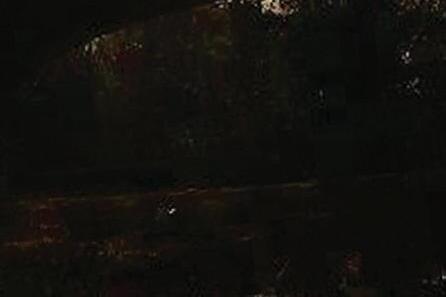





By Mimi Greenwood Knight

Jeff and Laura Atkinson love to play a game with their guests at Bienvenue, Mon Ami Bed and Breakfast in Amite, challenging them to find all the Giovanni bronze sculptures scattered around the 30-acre property.
“We also challenge them to look for all of our signature fleur-de-lis with an ‘A’ inside,” Laura says.
Bienvenue, Mon Ami—French for “welcome, my friend”—is the culmination of a lifetime spent traveling the globe. The bedand-breakfast is a mélange of amenities the Atkinsons enjoyed on their own travels.
Within the three guest rooms and one smaller overflow room visitors find special touches such as heated bidets like the Atkinsons experienced in Japan, oversized shutters they admired in France, tea pots and cups they imported from an English Castle and a different fresh-squeezed juice each morning like they enjoyed in Bordeaux.
Jeff and Laura have also stayed in bedand-breakfast establishments in Germany, Italy, Australia, Singapore, Mexico and

Canada. They brought home the best elements of each and incorporated them into the Bienvenue, Mon Ami experience.
While Jeff and Laura hail from Illinois and Ohio, respectively, they’ve embraced the nuances of Southern hospitality. And at an age when many of their peers are slowing down, they’ve found their true passion curating an international experience in the heart of Southeastern Louisiana.
The response has been overwhelming with guests visiting from across the United States, Europe and New Zealand.
Word quickly spread about the beautiful, new event space, and couples began booking small weddings under the wedding oak. Locals reserved space for wine tastings, crawfish boils, rehearsal dinners and afterhours business networking events.
“We’ve hosted quilting groups and Rotary clubs,” Laura says. “The Montessori school had an event here, and several of the teachers spent the night. They had a blast.”
While the COVID-19 pandemic meant lean times for many businesses, because of their remote location and open-plan





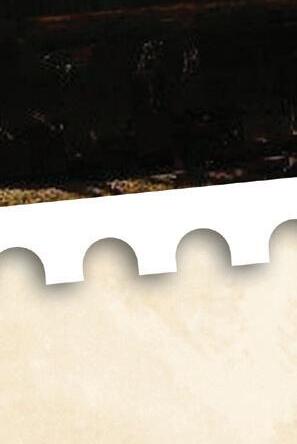



construction, this bed-and-breakfast was busier than ever.
Once the pandemic slowed, they formed partnerships with local businesses. Partnerships gave them the capability of offering package deals such as a ride into Hammond to attend a play at Columbia Theater for the Performing Arts, dinner at a local restaurant, a ride back to the bedand-breakfast, or special guest discounts at Global Wildlife Center.
While they do not offer catering or event planning, they recommend vendors they’ve worked with and often help guests find tables, chairs and tents to rent. They also have two RV hookups and RV guests enjoy all the bed-andbreakfast amenities.
Bienvenue, Mon Ami Bed and Breakfast was built new in 2018 for this exact purpose. Designed by Hammond architect Tom Pistorius, it’s built in the Antebellum Acadian style, complete with grand staircase. The main building includes large wraparound porches, 13-foot cathedral ceilings and floor-to-ceiling windows.
Perched atop a sweeping lawn, the
second story gives the impression of being even higher off the ground, and the oversized windows and porches provide guests with a perfect vantage point for daily visits from deer, rabbits and birds.
Mornings at Bienvenue, Mon Ami begin with an espresso, latte or cappuccino prepared by Jeff, along with a freshly squeezed juice each day.
“If someone stays with us for a week, we want them to enjoy something different each morning,” Jeff says. “Laura is an awardwinning chef, and she prepares fresh-baked pastry each morning, plus an evening snack. Her homemade Greek yogurt and crescents are legendary.”
Guests have a choice of where they’d like to have breakfast: on the porch with views of old-growth oaks and forest; in the sundrenched common area; on their own private balcony overlooking the woods; or you might even stroll out to the pond and enjoy your gourmet breakfast on a picnic table.
“Sunsets are best viewed from private balconies, but sunrises are best from the porch,” Jeff says.
Bienvenue, Mon Ami features a rotating art display in common areas and art and artisan goods for sale, some with the Bienvenue, Mon Ami name to commemorate your visit.
“Award-winning local artist Theresa Beaubouef is always on display with us, and we own several of her pieces ourselves,” Laura says. “But we rotate out other wonderful local artists, and many of the pieces are priced for sale.”
The year prior to opening, they hosted an artist in residence. Rachel Rodriguez stayed with the Atkinsons as she decorated each room with painted murals in different flower themes. Each theme represents a different woman in Laura’s life.
“I asked them each, ‘What’s your favorite flower?’ then gave Rachel free rein to paint the walls of the room with their flower,” Laura says.
The hibiscus room is in honor of her dear friend, Caroline Maher.
“Caroline also likes hummingbirds, so Rachel included some of those in the hibiscus room,” Laura said.
Laura’s sister, Cynthia, loves rose of Sharon flowers and butterflies, so Rachel did another room in homage to her. The lily
room is in honor of her friend, Suzette, and the hydrangea room is for her friend, Sherry Hill, of Pontchatoula.
“When any of them stay here, I make sure to put them in their room,” Laura says.

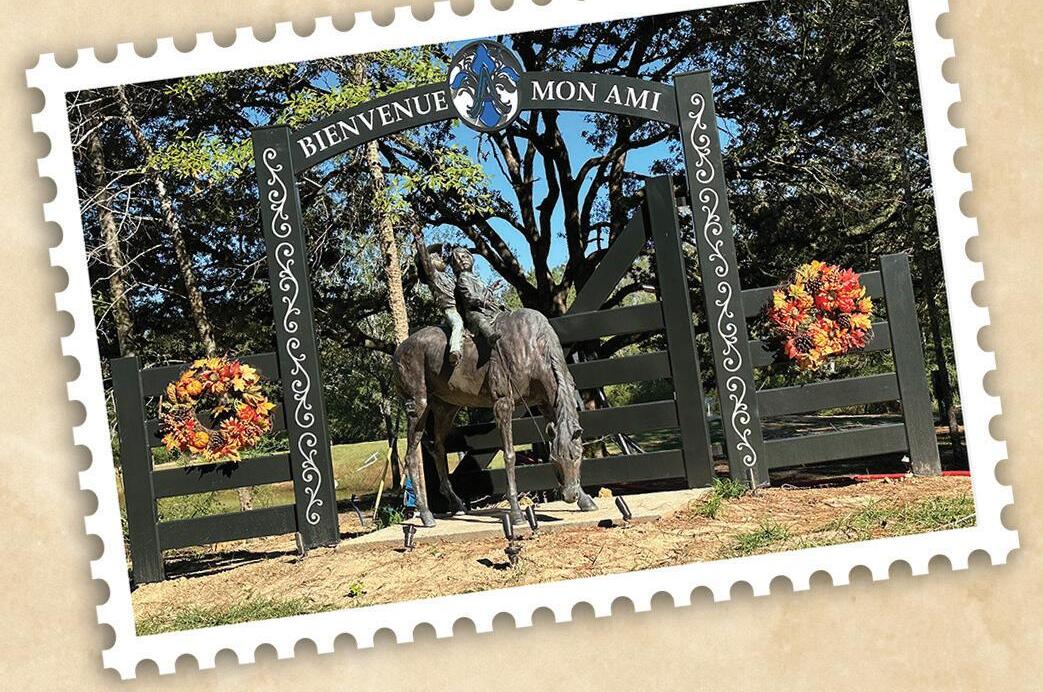
Rooms include king-size beds, glider chairs, TVs, European towel warmers and private bathing rooms designed after the wet rooms the Atkinsons experienced in Japan.
“The manufacturers of our heated toilets love us,” Jeff says, laughing. “I can’t tell you how many people have stayed with us then gone home and ordered one for themselves.”
The common area includes a pool table, air hockey, shuffleboard, foosball, TVs and a small library with recliners for reading.
There’s a semi-secluded hot tub, walking trails, sculpture garden, a floating flue fire-pit gazebo and fishing in a stocked pond.
Bienvenue, Mon Ami has garnered awards such as a Trip Advisor’s Traveler’s Choice Award rating it in the top 10% worldwide; Best B&B, Best Chef and Best Wedding Venue from Sophisticated Woman Magazine; a Reader’s Choice Award from Tangi Lifestyles Magazine; and a Louey Tourism award for Best BnB in Louisiana.
Since their opening five years ago, they have amassed nearly 500 online reviews—all five-star.
However, to the Atkinsons, the biggest compliment is when someone returns to stay with them again.
“We work hard to provide true concierge service, letting each guest decide what their visit will look like,” Laura says. “Nothing makes us happier than knowing someone was so pleased with their stay that they’ve returned to stay with us again.”
For more information or to book a room, visit MonAmiBnB.com, call 985634-7786, or visit the bed-and-breakfast at 20181 East Bell Road in Amite.


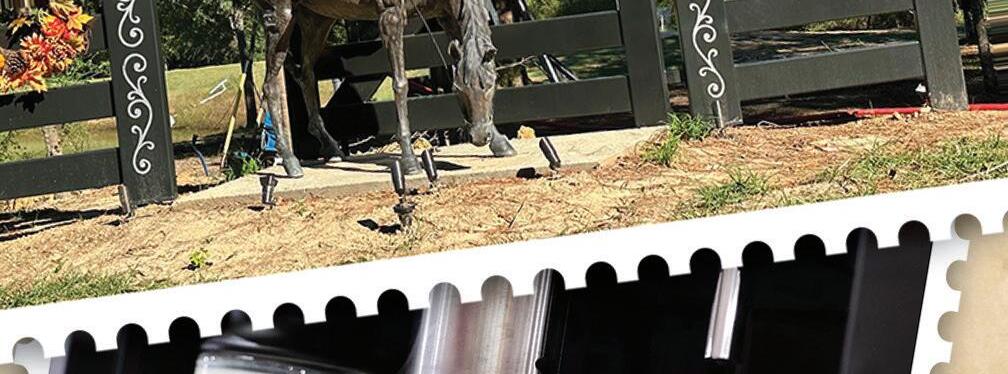









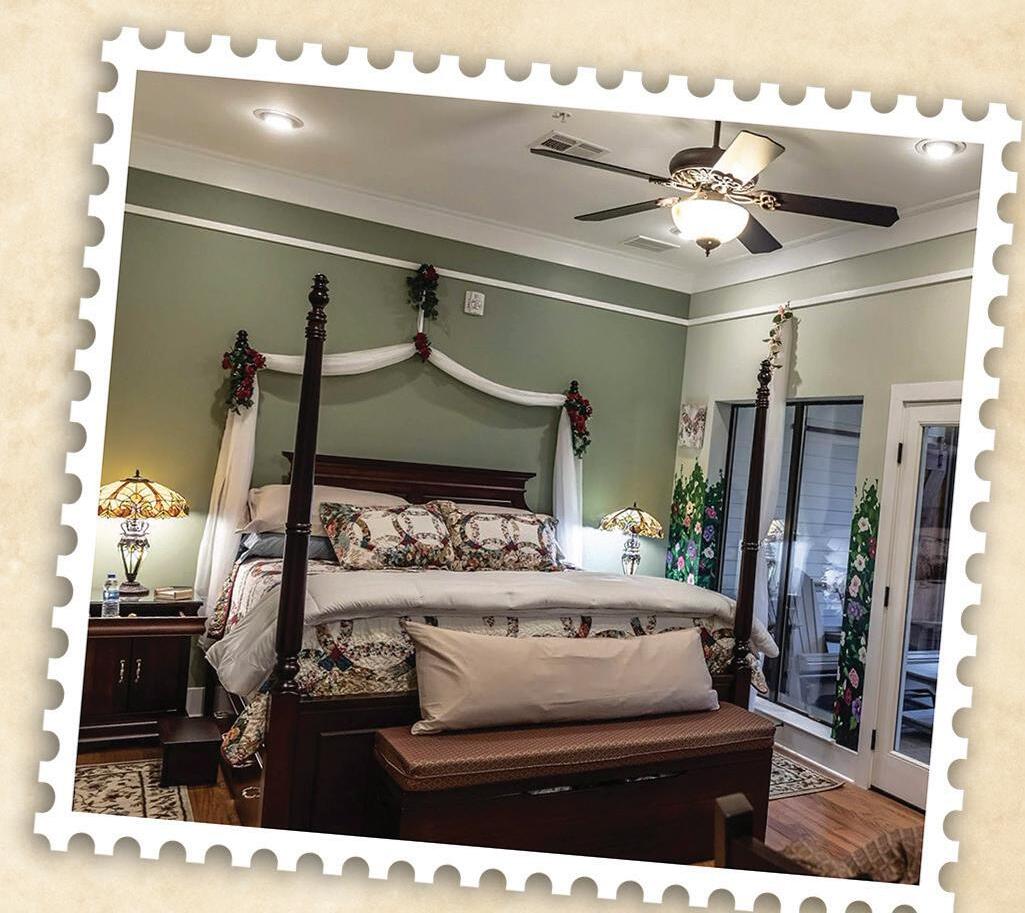


THIS PAGE: Bienvenue, Mon Ami has picturesque grounds that include a gazebo with a fireplace and a tree that’s become popular among brides and grooms. OPPOSITE: Sunrise brings a silhouette view of the statue of children fishing. PHOTOS COURTESY OF JEFF AND LAURA ATKINSON


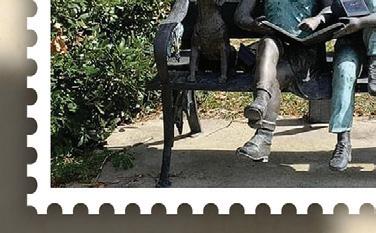











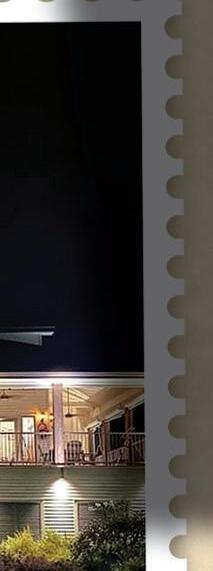


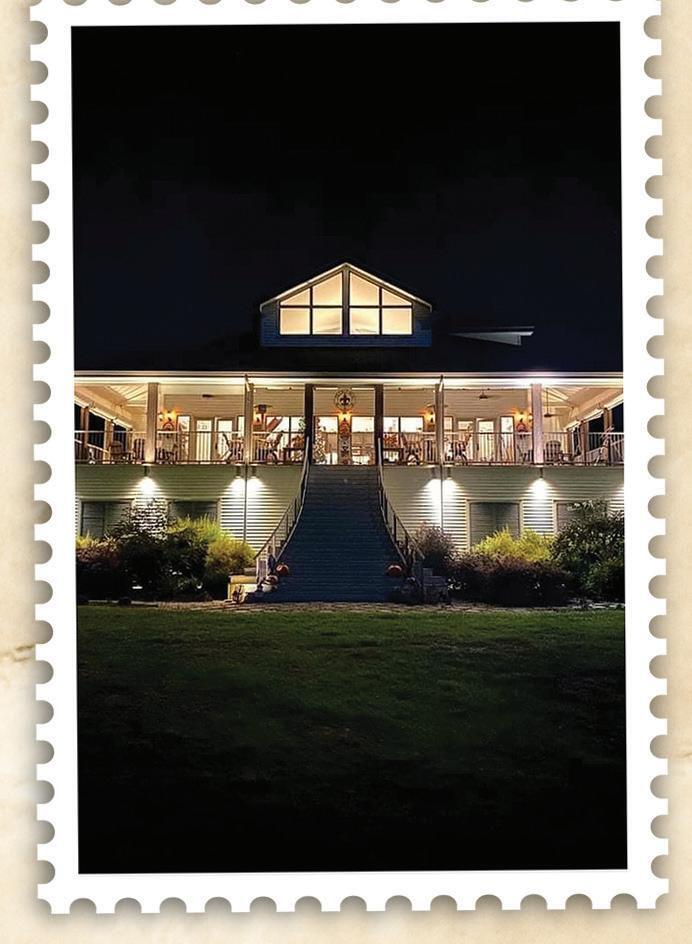







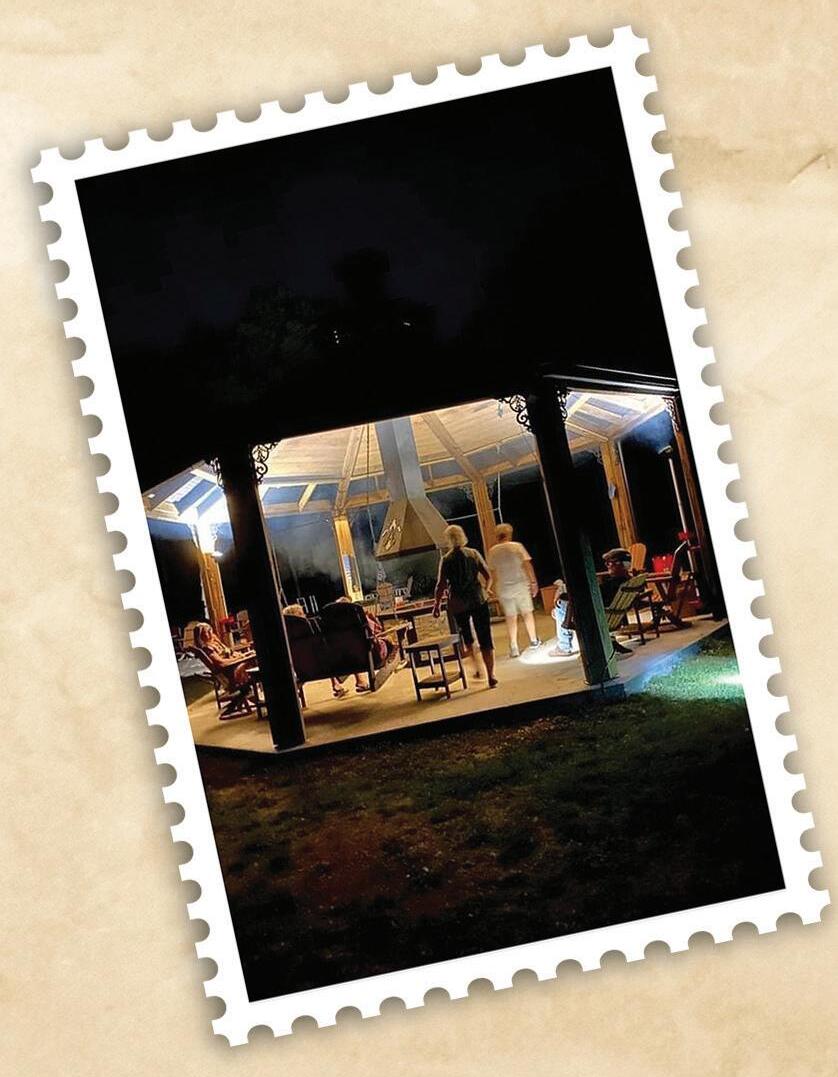


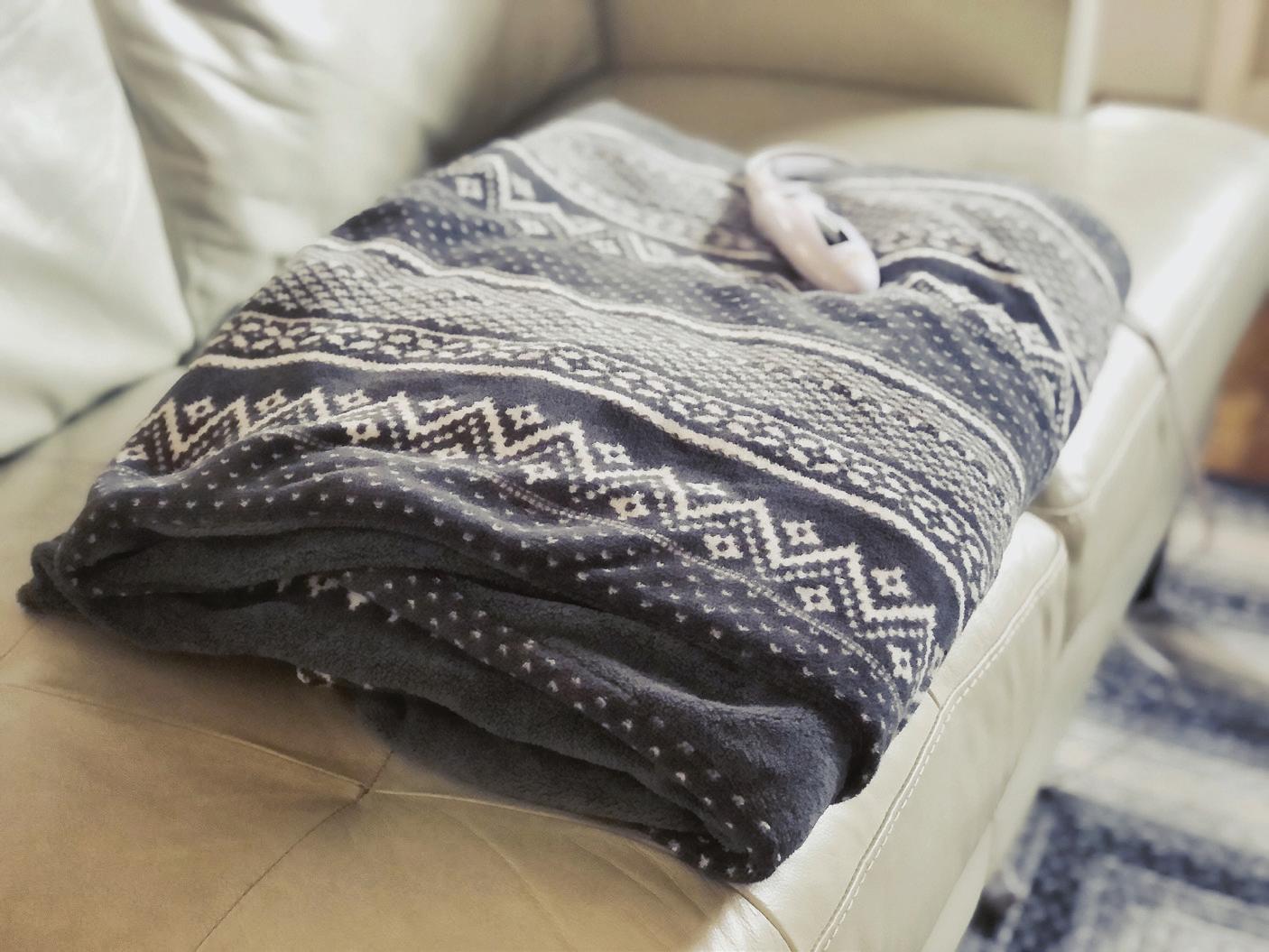
Small space heaters are meant to do exactly as their name says: heat small spaces. Unfortunately, many people use portable space heaters to heat their entire homes, which can take a toll on their energy bills.
The truth is, whether you should use a space heater really depends on your home’s efficiency and energy needs.
If you are using a space heater to compensate for problems in your home—such as inadequate insulation, drafty windows and exterior doors, or an inefficient heating system—space heaters are not a practical solution. Your best bet is to improve the overall efficiency of your home.
If you’re on a tight budget, caulking and weatherstripping around windows and exterior doors is a low-cost, easy way to save energy. Although more expensive, adding insulation can be a great next step.
Taking these proactive energy-saving measures rather than relying on space heaters for supplemental warmth can reduce your heating and cooling bills for years to come.
If your home is energy efficient but you are cold-natured and want a specific room to be cozier than the rest, a space heater may work for your needs.
A good comparison is ceiling fans. We use ceiling fans in the summer to cool people, not rooms. A space heater can be used in a similar way during winter.
Only use a space heater in a small space you are occupying. If possible, try to shut off other rooms to contain the warmth provided by the space heater.
If you decide to use a space heater, make sure it is properly sized for the space. Most heaters include a general sizing table.
A word about safety: The U.S. Consumer Product Safety Commission estimates that more than 25,000 residential fires are associated with the use of space heaters every year, resulting in more than 300 deaths. If you must use a space heater, buy a newer model that includes current safety features and carries the Underwriter’s Laboratory label.
Space heaters are energy hogs, and older models can be extremely dangerous. This winter, ditch the space heater and try these alternative solutions to stay cozy.
X Use an electric blanket to keep warm during the night.
X Caulk and weatherstrip around all windows and doors to prevent heat loss.
X Consider adding insulation to your attic and around ductwork.
Choose a thermostatically controlled heater to avoid energy waste and overheating. Place the heater on a level surface away from foot traffic when in use. Always keep children and pets away from a heater.
Before opting to use a space heater, consider alternative ways to stay warm, such as extra layers of clothing or UL-approved electric blankets. If you have hardwood or tile floors, put down area rugs to provide additional insulation and maintain warmth.
We know it’s cold out there, but remember this: In addition to safety concerns, space heaters can greatly increase your energy bills if used improperly.
For ways to reduce energy use and save money, visit energy.gov. n
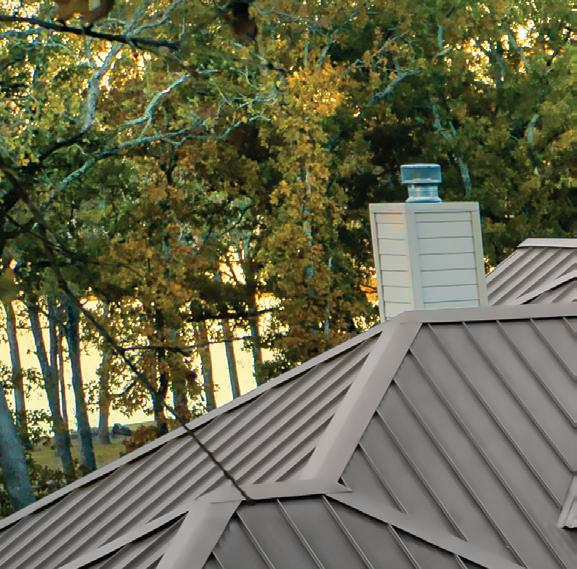
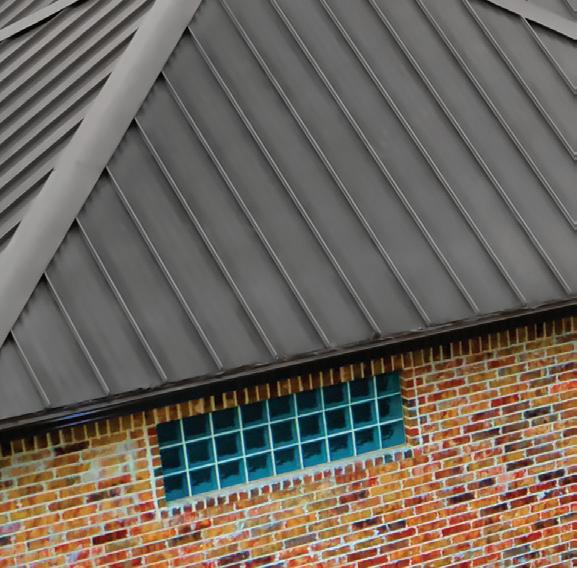

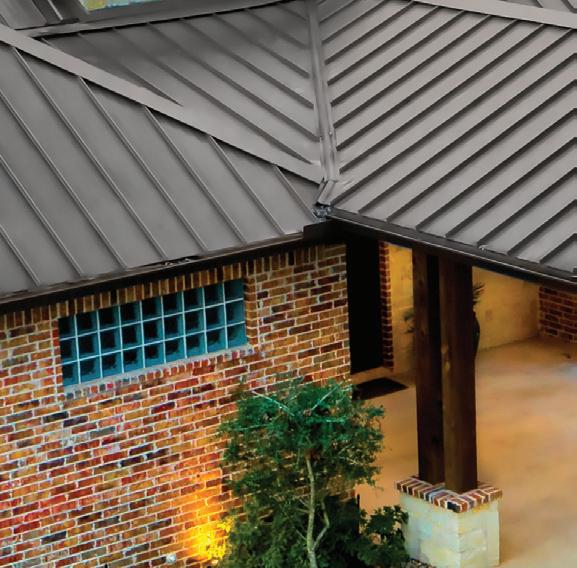

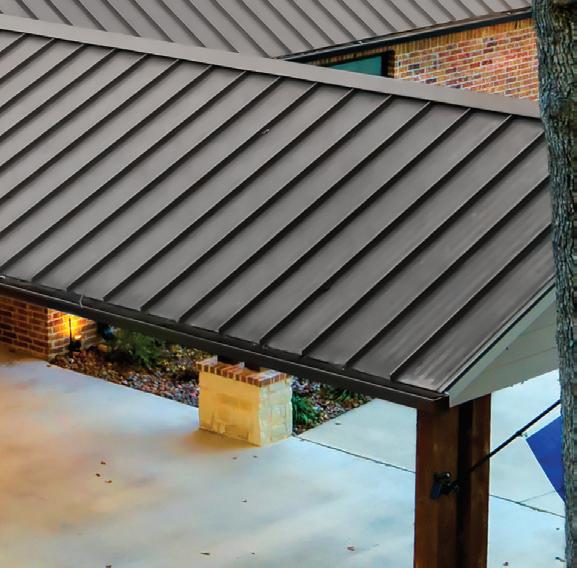




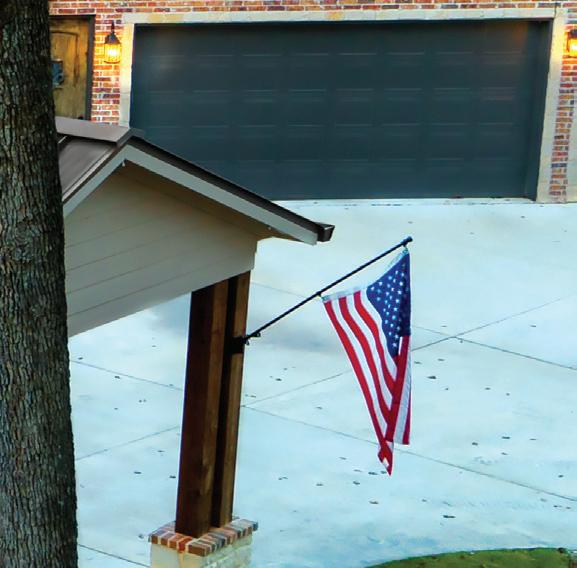














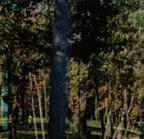


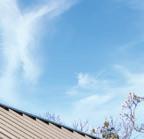


























ABOUTYOURBILLANDSTARTWATCHING Taxes/feesapply.Via satellite req's 24-mo. agmt
LEADERINSPORTS ANDLOCALSPORTS24/7


Claim basedonofferingofNat’landRegional Sports Networks.RSNsavail.with CHOICEpackageor higher. Blackout restr’s apply. Availability of RSNs varies by ZIP code and package.
Req’s separate subscription/loginforNetflix, Max, PrimeVideo (see amazon.com/amazonprimefor details) and other 3rdparty apps.Restrictionsapply. High speedinternet-connected compatible device required.Google login required. $69 99 *
ENTERTA IN MENT PACKAGE CHANNELS
($84 99/mo w/ req’d ARS $15/mo Fee) w/24-mo. agmt. + taxes, fees, AutoPay & Paperless Bill.
Available onlyin the U.S (excludes Puerto Rico andU.S.V.I.). Someoffersmay notbeavailable throughall channelsandinselectareas.Differentoffers may applyforeligiblemulti-dwellingunits Alloffers,packages,programming,promotions,features, terms, restrictions & conditions and all prices andfees not included inprice guaranteeare subject to changeor discontinuationwithout notice.Visit directv.com/legal/or callfor details
VIA SATELLITE: Pricing: ENTERTAINMENT $69.99/mo., CHOICE $84.99/mo., ULTIMATE $114.99/mo., PREMIER $159.99/mo. for two years. Aſter 2 years, then month to month at then-current prevailing prices unless cancelled. Price excludes Advanced Receiver Service Fee of $15/mo. (which is extra and applies to all packages) and Regional Sports Fee of up to $15.99/mo. (which is extra & applies to CHOICE pkg or higher) and certain other add’l fees & charges. Additional Fees & Taxes: $7/mo. for each additional TV connection on your account. Wireless upgrade with HD DVR $99.00. Applicable use tax expense surcharge on retail value of installation, custom installation charges, equipment upgrades/add-ons, and certain other add’l fees & chrgs. See directv.com/directv-fees/ for additional information. $10/mo. Autopay and Paperless Bill Discount: Must enroll in autopay & paperless bill within 30 days of TV activation to receive bill credit starting in 1-3 bill cycles (pay $10 more/mo. until discount begins). Must maintain autopay/paperless bill and valid email address to continue credits. DIRECTV Svc Terms: Subject to Equipment Lease & Customer Agreements. Taxes, surcharges, add-on programming (including premium channels), protection plan, transactional fees, and Federal Cost Recovery Fee are not included in two-year price guarantee. Visit directv.com/legal/ or call for details. Equipment Non-Return-Fees: If you cancel your service, you must return your leased equipment. Failure to return any equipment will result in fees of $45 for each standard DIRECTV Receiver, each HD DIRECTV Receiver, each Genie Mini and each Gemini receiver and $135 for each DVR, HD DVR, Genie® HD DVR and/or Genie 2 DIRECTV Receiver. GEMINI DEVICE: To use the Device, you will need an Internet connection, your use of which is subject to the fees, restrictions, terms, and limitations imposed by your Internet service provider. Gemini Device(s) will deactivate aſter 90 consecutive days without internet connection. If that happens, you will not be able to receive service through that Device until you (re)connect to the internet.
VIA INTERNET: Service subject to DIRECTV delivered via internet terms and conditions (see https://www.directv.com/legal/legal-policy-center/). Requires high speed internet. Minimum internet speed of 8Mbps per stream recommended for optimal viewing. Residential customers only. Pricing: ENTERTAINMENT $69.99/mo., CHOICE $84.99/mo., ULTIMATE $114.99/mo., PREMIER $159.99/mo. for two years. Aſter 2 years, continues month to month at then-current prevailing prices unless cancelled. Additional Fees & Taxes: Price excludes Advanced Receiver Service Fee of $15/mo. (which is extra and applies to all packages) and Regional Sports Fee of up to $15.99/mo. (which is extra & applies to CHOICE pkg or higher) and certain other add’l fees & charges. See directv.com/directv-fees/ for additional information. State and local taxes or other governmental fees and charges may apply including any such taxes, fees or charges assessed against discounted fees or service credits. DIRECTV Svc Terms: Subject to Customer Agreement. GEMINI/GEMINI AIR DEVICE: First device included for well qualified customers ; otherwise $120 for new Gemini/Gemini Air or $49.99 for Certified Restored Gemini. Applicable taxes due at sale. Additional Gemini/Gemini Air: Additional device for well-qualified customers $10/mo. for 12 mos., otherwise $120 each or $49.99 for each Certified
Gemini/Gemini Air may be returned within 14 days of the Ship Date for a full